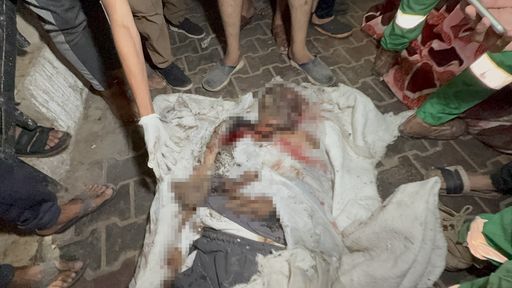Israeli forces operate a special intelligence unit tasked with smearing and targeting Palestinian journalists in Gaza, according to a new investigation by +972 Magazine and Local Call.
Known as the “Legitimisation Cell,” the unit was established in October 2023, at the start of Israel’s ongoing assault on Gaza.
The unit collected intelligence on alleged Hamas use of schools and hospitals.
The cell was tasked with gathering intelligence from Gaza to defend Israel’s image abroad, according to three intelligence officials who revealed that its mission was to depict Palestinian journalists as “undercover Hamas operatives”.
One of its most controversial assignments, sources said, was to find Gaza-based journalists who could be presented as undercover Hamas operatives, thereby deflecting mounting criticism over the killing of reporters.
“If the global media is talking about Israel killing innocent journalists, then immediately there’s a push to find one journalist who might not be so innocent, as if that somehow makes killing the other 20 acceptable,” one intelligence source explained.
According to the sources, the aim was less about operational security than public relations.
“The team regularly collected intelligence that could be used for hasbara, say; a stockpile of [Hamas] weapons [found] in a school, anything that could bolster Israel’s international legitimacy to keep fighting,” one said.
The intelligence was also shared with the United States, with the stated purpose of preventing diplomatic pressure or disruption of weapons supplies.
One source described a case in which the unit wrongly portrayed a journalist as a Hamas military commander.
“They were eager to label him as a target, as a terrorist, to say it’s okay to attack him,” the source recalled. “In the end, they realised he really was a journalist,” and no strike was carried out.
Serving ‘hasbara efforts’
The same tactics appear in the army’s justification for strikes on Al-Sharif and fellow journalist Ismail Al-Ghoul.
Documents released by the Israeli military claimed Al-Sharif had been recruited to Hamas in 2013, though they indicated he was inactive since 2017.
In Al-Ghoul’s case, a file suggested he was given a military rank in 2007, when he was 10 years old.
One of the unit’s first major actions came after the October 17, 2023 blast at Al-Ahli Hospital in Gaza.
While local officials blamed an Israeli strike, the Legitimisation Cell released what it said was an intercepted phone call between Hamas operatives pointing to a misfired Islamic Jihad rocket.
Some global outlets deemed the claim credible, but one Palestinian activist later told +972 the voice in the recording was his, insisting it was taken from an unrelated conversation.
Even intelligence personnel outside the unit were told to flag material that could help Israel in the “information war.” As one source put it: “The goal was simply to find as much material as possible to serve hasbara efforts.”
Israeli smear campaign
Al-Sharif had spoken openly about being targeted in an Israeli smear campaign.
After he posted a video of himself in tears while covering Gaza’s hunger crisis, the Israeli army’s spokesperson, Avichay Adraee, published videos attacking him, accusing him of participating in “Hamas’s false starvation campaign.”
“Adraee’s campaign is not only a media threat or an image destruction; it is a real-life threat,” he told the Committee to Protect Journalists in July, a month before his death.
The military insists it targeted “a terrorist from the Hamas terrorist organisation who was operating under the guise of a journalist from the Al Jazeera network,” adding that it took steps to minimise civilian harm.
At 28, Al-Sharif was among Gaza’s most prominent reporters, known for his coverage of Gaza’s forced starvation. He is one of at least 186 journalists killed since October 7, the deadliest period for reporters since CPJ began recording data in 1992.
“If these words reach you, know that Israel has succeeded in killing me and silencing my voice,” he wrote in a final message later published online. “I have lived through pain in all its details, tasted suffering and loss many times, yet I never once hesitated to convey the truth as it is, without distortion or falsification.”




















